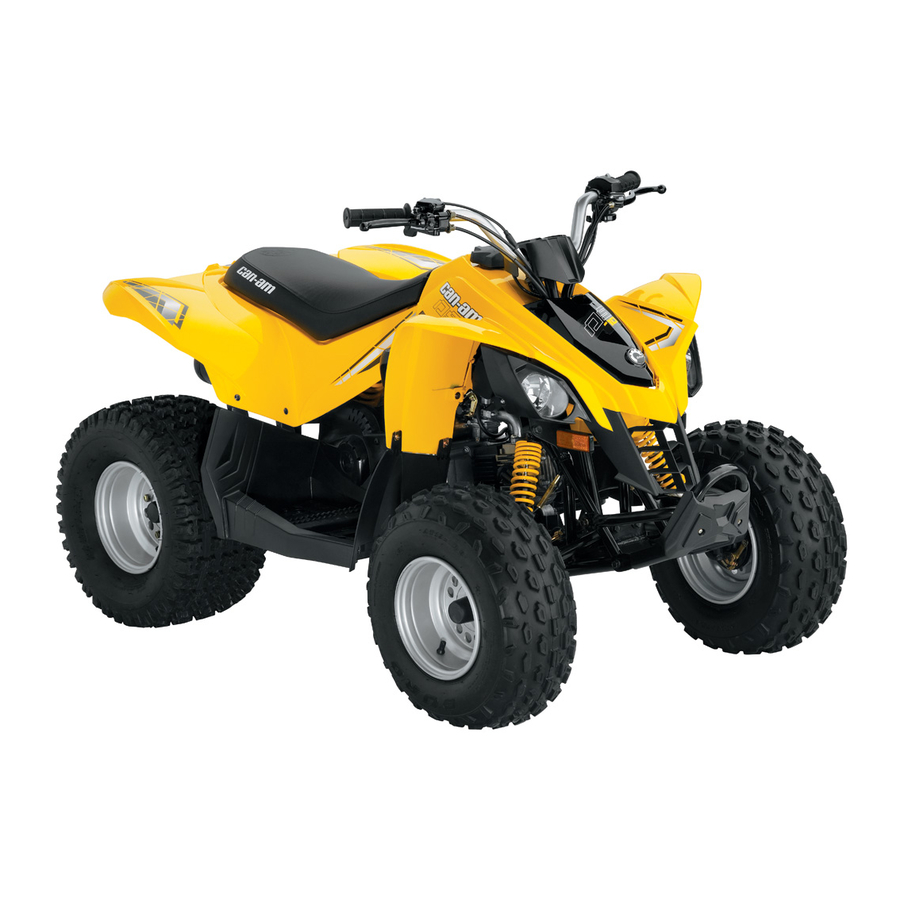
Can-Am DS 70 Operator's Manual
Safety, vehicle and maintenance information
Hide thumbs
Also See for DS 70:
- Operator's manual (140 pages) ,
- Operator's manual (136 pages) ,
- Operator's manual (132 pages)
Table of Contents
Advertisement
Advertisement
Chapters
Table of Contents
Troubleshooting
















Need help?
Do you have a question about the DS 70 and is the answer not in the manual?
Questions and answers